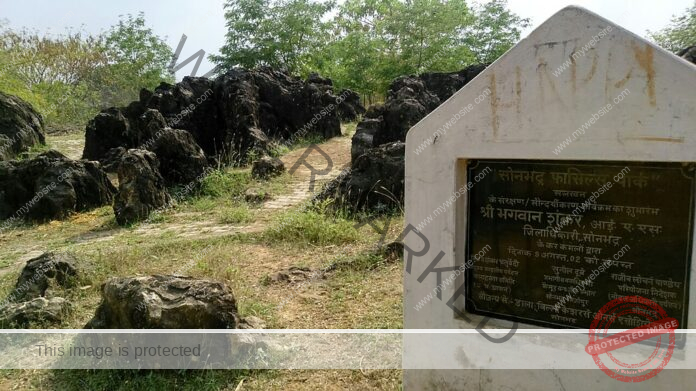In a significant achievement for Uttar Pradesh, the Yogi Adityanath-led government has successfully secured a place for Salkhan Fossils Park—one of the world’s oldest fossil sites—in UNESCO’s Tentative List of World Heritage Sites. Detailed information about the park is available on the official UNESCO website: https://whc.unesco.org/en/tentativelists/6842. This development is expected to propel Uttar Pradesh’s tourism to new heights on the international stage.
Acting on Chief Minister Yogi Adityanath’s directives, the Eco-Tourism Development Board is currently preparing a detailed dossier to support the park’s nomination for UNESCO’s permanent World Heritage list. This dossier will soon be submitted to the Government of India. It is anticipated that the park will attain full World Heritage status within the next two years.
Principal Secretary of Tourism Mukesh Meshram stated that Chief Minister Yogi Adityanath has consistently undertaken key initiatives to strengthen tourism in the state, with a particular focus on eco-tourism. As a result of these sustained efforts, the Eco-Tourism Development Board has recently introduced Vistadome coaches on a tourist train, providing scenic rail connectivity between Katarniaghat Wildlife Sanctuary and Dudhwa Tiger Reserve.
Furthering this vision, the Board has now achieved a major accomplishment by securing a place for Salkhan Fossils Park—located near Salkhan village, approximately 15 km from Robertsganj in Sonbhadra—on UNESCO’s Tentative List. The Tourism Department had been working towards this goal for the past year.
A pivotal step in the process was the signing of a Memorandum of Understanding (MoU) on June 26, 2024, between the Uttar Pradesh Eco-Tourism Development Board and the Birbal Sahni Institute of Palaeosciences, Lucknow, under the leadership of CM Yogi. The institute conducted scientific studies of the park’s fossil-bearing rocks, which revealed 1.4 billion-year-old stromatolites and algae fossils—considered some of the earliest evidence of life on Earth. These findings formed the scientific foundation for the park’s nomination to UNESCO.
This recognition not only highlights the geological significance of Salkhan Fossils Park but also places Uttar Pradesh prominently on the global eco-tourism map.
UP Tourism Director Prakhar Mishra explained that the process of including any site in the UNESCO World Heritage List begins with its entry into the Tentative List. Following this, a comprehensive dossier is prepared, which forms the basis for the nomination to the permanent list. This entire process typically takes about a year and includes an on-site evaluation by a UNESCO team.
He informed that the dossier for Salkhan Fossils Park in Sonbhadra is currently being prepared and will soon be submitted to the Government of India for forwarding to UNESCO. He expressed optimism that the park could be officially inscribed on the permanent World Heritage List within the next two years. Such recognition would not only bring international acclaim to Uttar Pradesh but also significantly enhance its global tourism profile.
Mishra further noted that a comparative study has been conducted between Salkhan Fossils Park and other major fossil sites around the world. He added, “While the fossils at Yellowstone National Park in the United States (already a UNESCO World Heritage Site) are around 500 million years old, those at Mistaken Point in Canada are about 550 million years old, and Joggins Fossil Cliffs (also in Canada) are around 310 million years old. In contrast, the stromatolites found at Salkhan Fossils Park are approximately 1.4 billion years old—making them among the oldest known evidence of life on Earth. This immense scientific value greatly strengthens the park’s case for permanent UNESCO status, and the Uttar Pradesh Eco Tourism Development Board is working diligently toward this goal.”
Amid rising national and international interest in Earth’s ancient natural heritage, Salkhan Fossils Park—also known as Sonbhadra Fossils Park—is emerging as a key site of global importance. Situated near Salkhan village, about 15 km from Robertsganj in Sonbhadra district, the park lies in a picturesque region between the Kaimur Wildlife Sanctuary and the Vindhya mountain range.
Spread across 25 hectares, the park is home to exceptionally well-preserved stromatolites—layered, microbial rock formations embedded in ancient sandstone and dating back roughly 1.4 billion years. These fossils represent some of the earliest known life forms and provide invaluable insights into the plan

